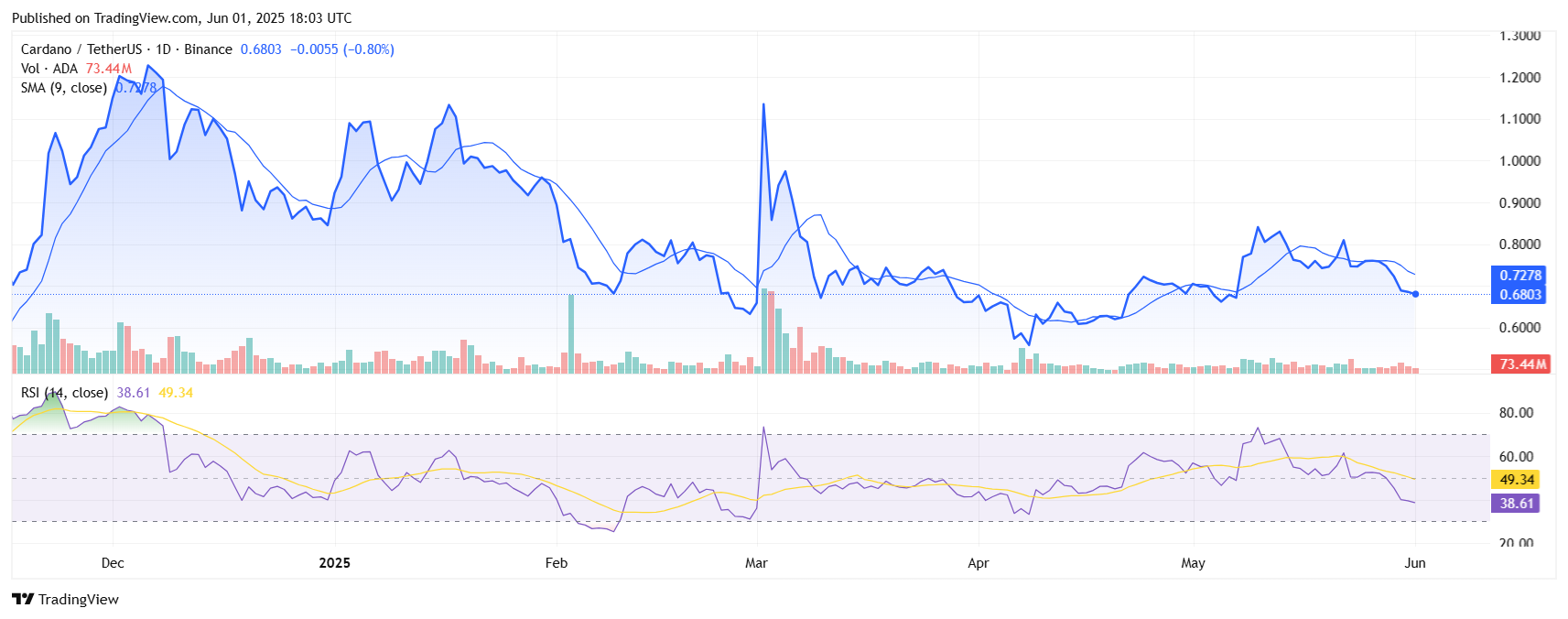In the dynamic world of cryptocurrency, Cardano (ADA) remains a focal point for investors looking for innovative blockchain solutions. As of June 1, 2025, the native token of Cardano, ADA, was negotiated at 0.682882 USD, reflecting a recent drop below the bar of $ 0.70. Despite this volatility, the robust Cardano technology and the growing ecosystem continue to arouse interest. But with mixed market signals and fierce competition, is the question: however, is Cardano a good investment in 2025? This analysis explores the technological progress of Cardano, adoption trends, market performance, risks and expert opinions to provide full opinion.
Read more: Top 4 Altcoins of less than $ 1 with a crazy growth potential: Kaspa (Kas), Cardano (ADA), Tron (TRX) and Etfswap (ETFS)
Technological advances
Cardano is renowned for its rigorous approach and research focused, distinguishing it in the blockchain space. Built on the consensus mechanism of the evidence of hemode in energy, Cardano prioritizes sustainability and scalability. In May 2025, the Cardano team published Node V.10.4.1, introducing the UTXO-HD function for more flexible storage of the unat-spent transaction output, improving the efficiency of the network.
The Plutus team has also advanced the safety of intelligent contracts thanks to formal methods and modular exponential tests, ensuring reliable execution for decentralized applications (DAPP). In addition, scaling efforts have proven to be promising, Leios simulations reaching 1,000 transactions per second (TPS), positioning Cardano as a potential leader in high performance blockchain applications. These developments underline Cardano’s commitment to create a platform capable of supporting the DAPPs on a large scale and critical, in particular in DEFI and NFT.
However, Cardano’s method of methodical development has aroused criticism to be slower than competitors like Ethereum or Solana, which could have an impact on its ability to capture the short -term market share.
Adoption and growth of the ecosystem
The Cardano ecosystem is developing, with an increasing number of projects taking advantage of its platform. Recent integrations include the release of Flow DEFIPAPER and the partnership with Strike Finance, as well as the care of Trust Wallet for the integrated DREP delegation, simplifying the participation of users in Cardano governance. These developments indicate increasing adoption and utility.
A significant boost comes from the Japanese market, where ADA / JPY trading pairs have increased volume, indicating a strong regional interest (Japanese interest). In addition, the accumulation of whales of around 170 million ADA suggests the confidence of large investors (accumulation of whales). These trends indicate an ecosystem in maturation, although Cardano always follows Ethereum in the total locked value (TVL) and the active DAPPs, a deviation which it must be closed to compete effectively.
Market performance and feeling
Cardano prices history reflects the typical cryptocurrency volatility. In 2024, ADA culminated at $ 1.44 in December but fell to $ 0.86 on December 26.

In 2025, the price continued to fluctuate, recently lowering less than $ 0.70 to 0.682882 USD on June 1. Certain technical analyzes warn against new drops, potentially at $ 0.60, fired by lowering trends and a reduction in commercial volume.
Conversely, the positive indicators include the accumulation of whales and the increase in commercial activity, especially in Japan, which could support a recovery of prices. The feeling of the market is mixed, with an index score of fear and greed of 50 (neutral) and technical indicators showing a downward tilt (78% down). In the past 30 days, ADA has experienced 13 green days, with price volatility of 5.84%, suggesting potential for upward and decreasing movements. Cardano’s RSI table is illustrated below.

Risks and challenges
Investing in Cardano has significant risks. Regulatory uncertainty is a major concern because governments around the world continue to develop cryptocurrency policies. The American Securities and Exchange (SEC) commission could classify Cardano as a guarantee, which has a potentially impact on its market position. Competition from Ethereum, Solana and other blockchains, which offer faster transactions or more established ecosystems, poses another challenge.
Cardano’s slower development rate, while guaranteeing quality, was a discord point, which does so lagging behind by faster competitors. In addition, market volatility remains a constant risk, as evidenced by the recent ADA price oscillations. Investors must carefully weigh these factors.
Expert opinion
Analysts offer a range of predictions for the future of Cardano. Optimistic forecasts, such as that of Bitpanda Academy, suggest that ADA could reach $ 5.66 by the end of 2025, driven by technological progress such as the Hydra Layer-2 solution, increased adoption of the challenge and institutional investment. More conservative estimates, such as those of Changelly, predict a range of $ 0.50 to $ 1.10, citing risks such as regulatory obstacles and competition.
Some analysts highlight Cardano’s inclusion in the United States Strategic Reserve as a positive factor, while others warn potential delays in updates or market consolidation having an impact on its price. This divergence underlines the uncertainty surrounding the short -term trajectory of Cardano.
Quick summary,
Cardano presents a convincing investment opportunity because of its strong technological basis, its growing ecosystem and its long -term growth potential in sectors like DEFI and NFTS. Recent developments, such as nodes upgrades and increased adoption in Japan, strengthen its case. However, significant risks – including regulatory uncertainty, competition and market volatility – are not ignored.
For investors with high risk tolerance and a long -term perspective, Cardano can be an interesting addition to a diversified wallet. However, in -depth research and careful risk management is essential. Consultation of a financial advisor can provide personalized advice. In the end, the question of whether Cardano is a “good investment” depends on the individual objectives and the appetite for risks. As with all cryptocurrencies, reasonable diligence is critical.




